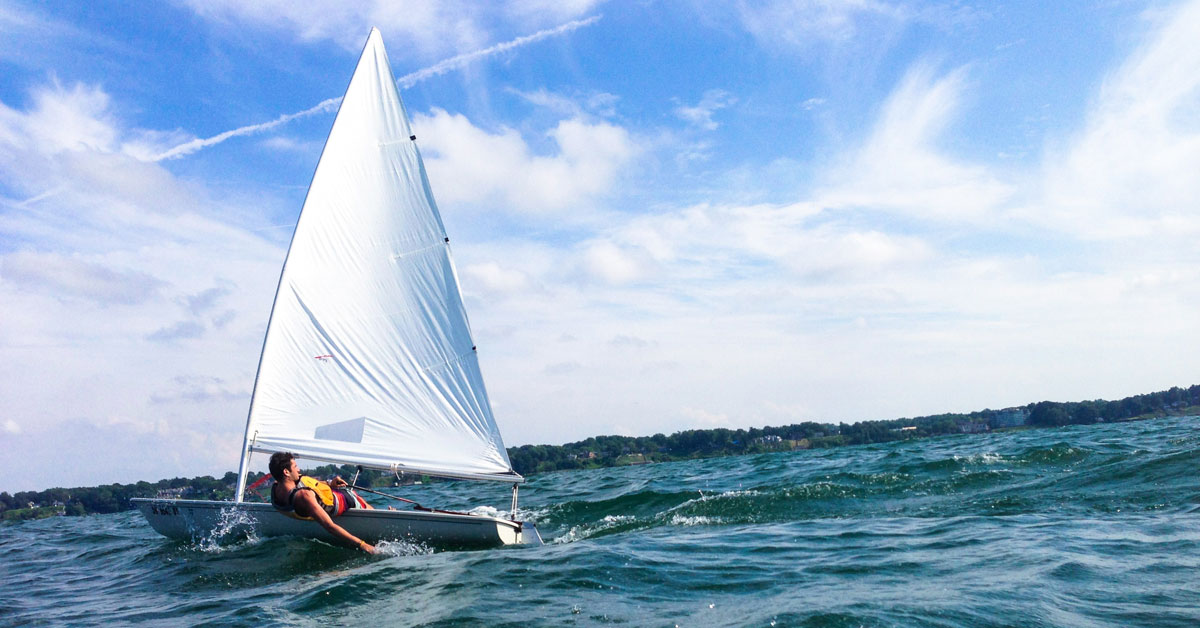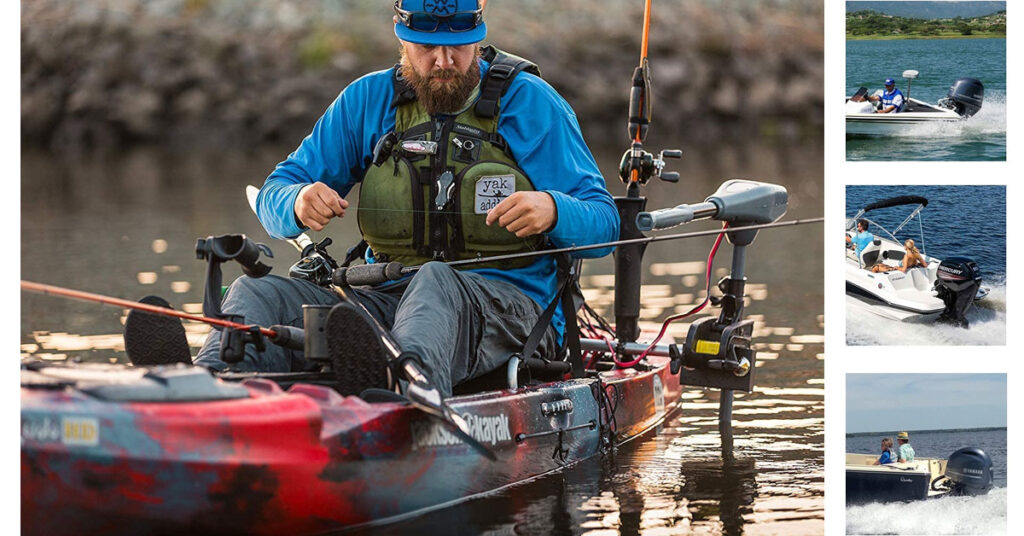The wind is a key factor in the sailing process. It is an invisible force which creates waves and pushes sailboats forward or back. When sailing against the wind, it is important to be aware of what direction the wind is blowing and use that information to your advantage. Sailing against the wind is a well-known and oftentimes successful way to travel. It requires good judgment, skill and planning.
When sailing against the wind, it is important to be aware of what direction the wind is blowing and use that information to your advantage. For example, if the wind is blowing from the east, it would be in your best interest to head west in order to reach your destination faster. Sailing against the wind is a skill which all sailors learn as they progress in their sailing careers. In order to sail against the wind, a sailor needs to know the direction of the wind.

How do sailboats go against the wind?
When sailing against the wind, sailors use their sails to catch the wind and use its power to propel the boat in the opposite direction. There are a few different ways to sail against the wind, depending on the type of boat and the conditions of the wind. In light winds, sailors can use a technique called “tacking” to sail diagonally across the wind.
Tacking involves turning the boat so that its bow crosses the wind, then changing course so that the new bow catches the wind. This process is repeated until you reach your destination. In strong winds, sailors can use a technique called “jibing” to sail directly against the wind. Jibing involves turning the boat so that its stern crosses the wind, then changing course so that the new stern catches the wind. This process is also repeated until you reach your destination.
When sailing in a group of boats, it is sometimes possible to sail one boat’s bow or stern directly into the wind while several boats sail lugsail sails. This technique is called “tacking with jibes. The primary advantage of sailing with a jib is that the boat can sail in a more direct line with the wind while tacking. This means that when sailing against the wind, there is less chance that the boat will swing around as it catches and loses the wind.
Why is sailing close to the wind dangerous?
Sailing close to the wind is dangerous because it can cause a sailor to lose control of their vessel. When sailing close to the wind, a boat is traveling at an angle relative to the direction of the wind. This can make it difficult to keep the boat on course and can cause it to heel over, or lean, too far. When this happens, the boat can become unstable and can easily capsize or sink. You must take some serious precautions.
Sailing close to the wind is also dangerous because it can cause a sailor to become fatigued more quickly. When sailing head-to-wind, a sailor must constantly adjust their course in order to maintain their position. This takes a lot of energy and can quickly wear someone out.
Overall, sailing close to the wind is dangerous because it can cause a boat to lose control and capsize, and it can exhaust a sailor quickly.
Tips, Tricks and Techniques you should know to Sail against the Wind
Sailing against the wind can be a difficult task, but with the right tips, tricks and techniques, you can make it a little easier. Here some are given below:
1. Get familiar with the wind conditions
When sailing against the wind, you need to be aware of the wind conditions. The direction and strength of the wind can vary greatly depending on your location. You’ll also need to know what type of sailboat you’re sailing and what type of sails you’re using.
If you’re sailing in open water, it’s best to use a spinnaker. This sail will help you travel faster and farther against the wind. If you’re sailing in a harbor or on a lake, a jib or genoa sail is a better choice. These sails are smaller and more maneuverable than a spinnaker.
No matter what type of sailboat you’re using, always be aware of your surroundings. Make sure there are no other boats or obstacles in your path before attempting to sail against the wind and stay alert especially if you are in a foggy condition.
2. Adjust your course
Sailing against the wind may seem counterproductive, but if done correctly it can actually help you move faster. Sailing at an angle to the wind will cause your boat to move faster than if you sailed parallel to the wind. This is because the wind will be pushing against your sails more effectively.
However, sailing against the wind takes more effort and can be more difficult. You will need to adjust your course frequently to keep up with the wind, and you may need to use more sail power. If you are not experienced with sailing against the wind, it is best to avoid doing so in strong winds or rough seas.
3. Keep your speed up
In order to sail against the wind, you need to keep your speed up. Doing so will create more drag on the boat, allowing you to move forward against the wind’s resistance. You can increase your speed by sailing close to the wind and using a smaller sail. If you find yourself struggling to move against the wind, try these tips to help you get ahead.
4. Use a spinnaker
When you’re sailing against the wind, using a spinnaker can be a great way to get speed and power. The spinnaker is a large piece of fabric that is designed to fill with air and create drag, helping to push the boat forward. To set up the spinnaker, you’ll need to pull it out of its bag and attach it to the mast. Then, you’ll need to adjust the lines so that it’s in the correct position. When you’re ready to use it, simply let go of the lines and let the spinnaker do its job!
5. Find the right sails for your boat
Sailing against the wind can be a very challenging experience, but it can also be very rewarding. In order to make the most of your sailing adventure, you’ll need to find the right sails for your boat. Here are a few tips to help you get started:
- Make sure your sails are in good condition. If they’re ripped or tattered, they won’t do you much good in a windstorm.
- Choose the right type of sail for your boat. There are many different types of sails available, so you need to find the ones that will work best for your vessel.
- Size matters! Make sure your sails are big enough to catch the wind and propel your boat forward.
- Experiment with different sail combinations until you find the ones that work best for you.
6. Use more than one sail if possible
There’s no need to feel limited when sailing against the wind; using more than one sail can help you cover more distance and make it a bit easier. By using both a jib and a mainsail, for example, you can create a sail area that is much larger than using just one sail. This will help you push the boat along more easily and make it less work to stay on course.
Additionally, if you have a smaller boat, using two sails can be essential in order to get the most out of your vessel. So next time you hit the open waters, don’t be afraid to use more than one sail – it just might make sailing against the wind a bit easier!
7. Use the rudder for control
Sailing against the wind can be a difficult task, but it can be done by using the rudder to control your sailboat. Turning the rudder to the left or right will help you steer your boat in the desired direction. Be sure to use the wind to your advantage and adjust your sails accordingly. If you’re sailing upwind, keep your sails angled slightly towards the wind. This will help you move faster and stay on course.
8. Be patient and don’t give up
There are times when the wind is against us and it feels like it’s impossible to move forward. We might feel like we’re fighting a losing battle, but if we stay patient and don’t give up, we can eventually sail against the wind. It’s not going to be easy and it might take a long time, but if we keep pushing forward, we’ll get there in the end.
Can you sail directly into the wind?
Can you sail directly into the wind? That’s a question that has perplexed sailors for centuries. And, unfortunately, there is no definitive answer.
There are a few things to consider when trying to sail directly into the wind. The first is your boat’s design. Some boats are better suited for sailing into the wind than others. The second consideration is the wind speed and direction. If the wind is too strong or blowing in the wrong direction, it will be impossible to sail directly into the wind.
Despite these challenges, it is possible to sail directly into the wind under certain circumstances. With a properly designed boat and favorable winds, sailing into the wind can be a fun and exhilarating experience.
How did ships sail without wind?
One of the most enduring mysteries of sailing is how ancient ships were able to cross vast oceans without the aid of wind. The answer, it turns out, is a combination of clever engineering and skilled seamanship.
The first sailors likely used sails to take advantage of ocean currents and winds. Sails can also be used to power a ship in reverse, allowing sailors to navigate against the wind. In calm weather, sailors can also use oars or a pole to propel a ship forward.
By using these techniques, ancient sailors were able to navigate their way around the world without relying on wind power. While this may seem like a daunting task, it’s actually quite impressive when you consider how much we still rely on wind power today.
Conclusion
Sailing against the wind is a challenging but rewarding experience that can be enjoyed by anyone with the right equipment and know-how. So if you’re looking for a new adventure, or just want to try something different, sailing against the wind is definitely worth considering.
You May Also Like


